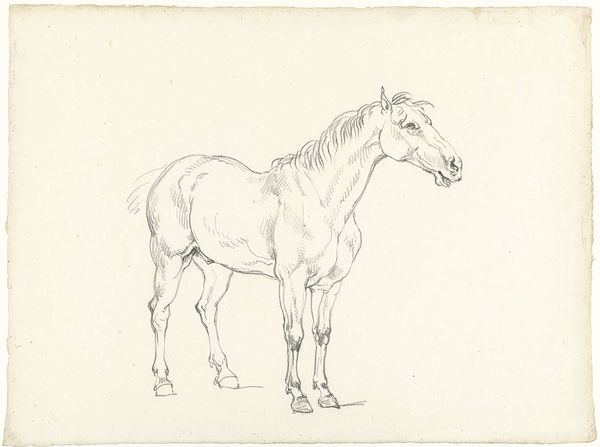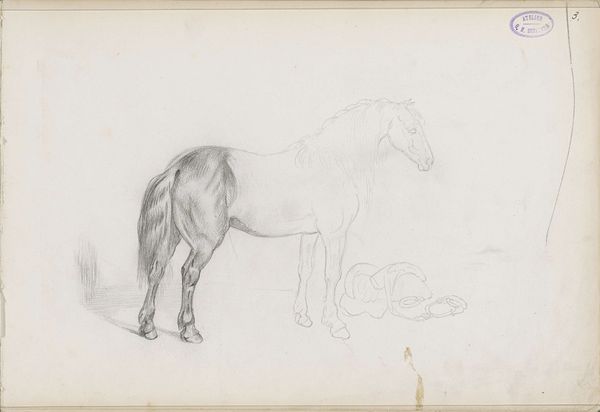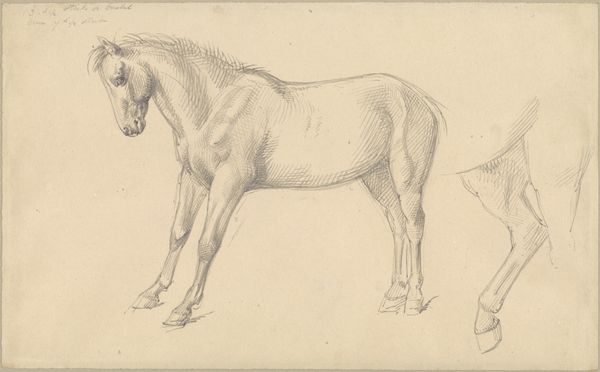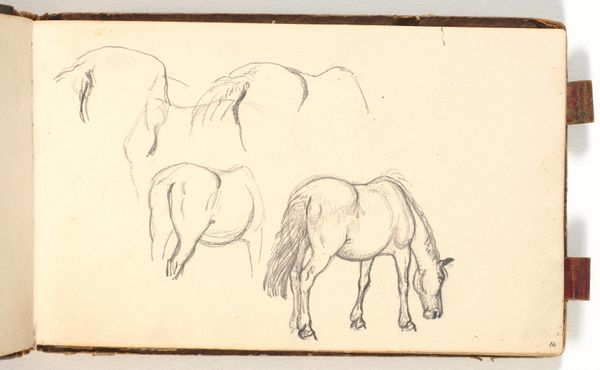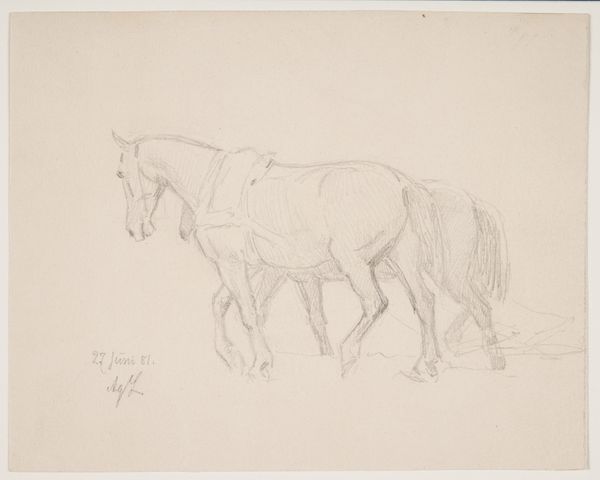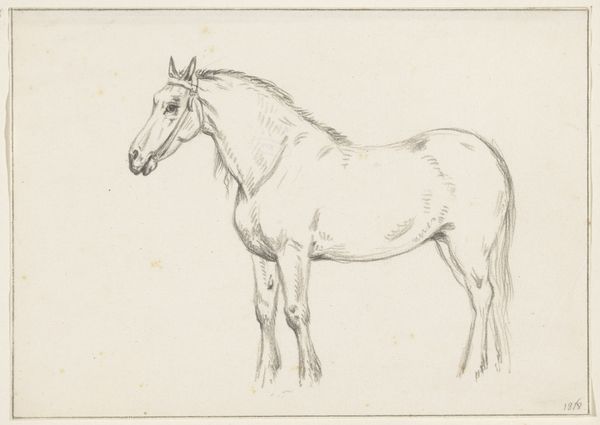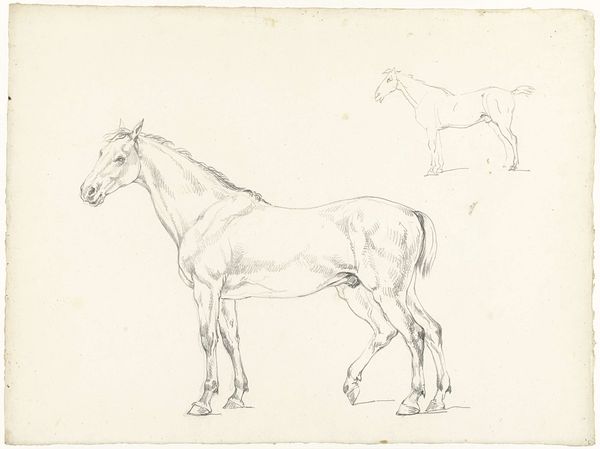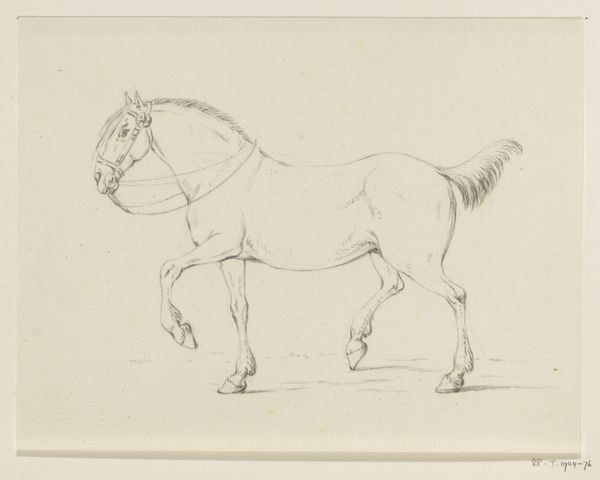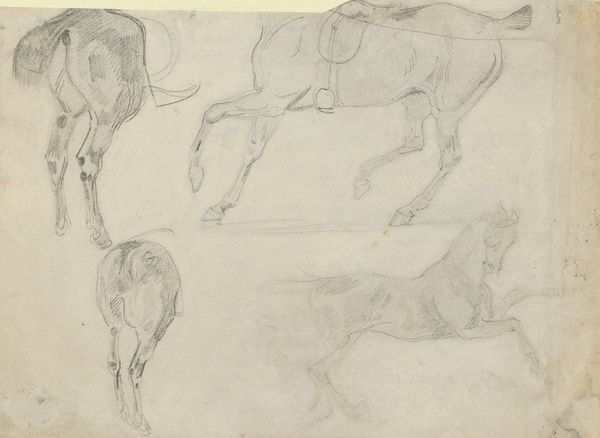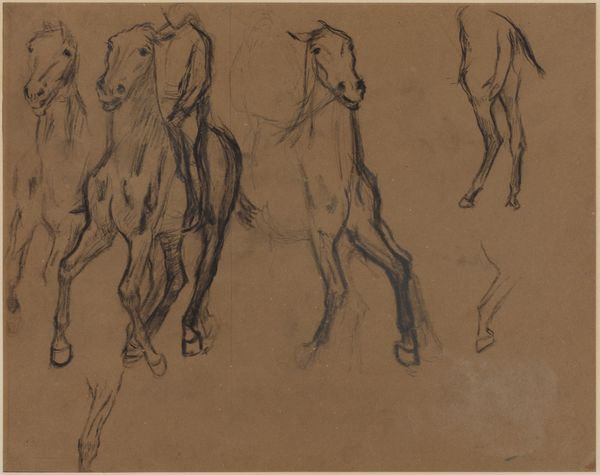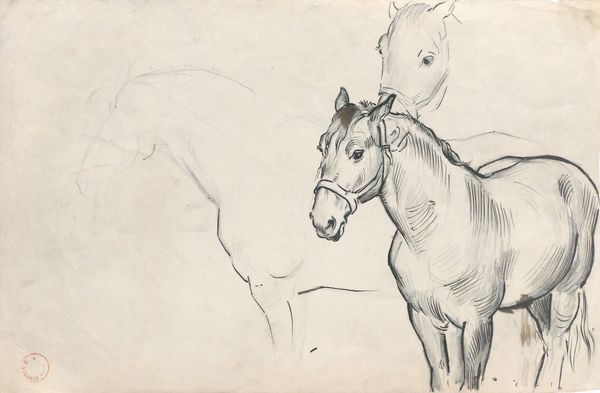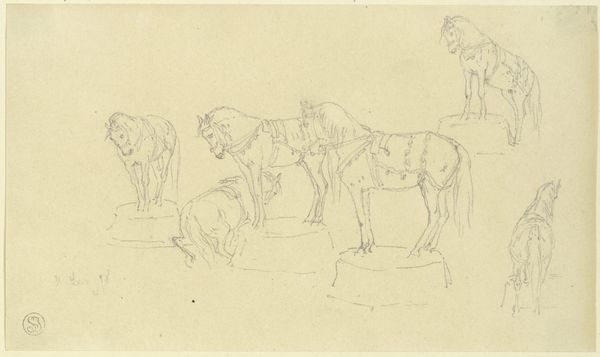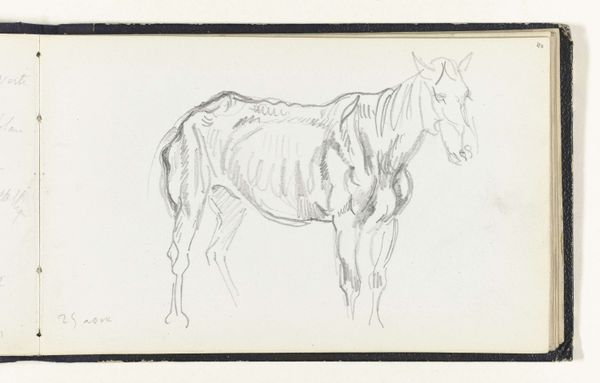
drawing, pencil
#
drawing
#
amateur sketch
#
toned paper
#
light pencil work
#
pencil sketch
#
incomplete sketchy
#
landscape
#
form
#
personal sketchbook
#
ink drawing experimentation
#
pencil
#
horse
#
line
#
sketchbook drawing
#
sketchbook art
#
realism
#
initial sketch
Copyright: Rijks Museum: Open Domain
Curator: This is George Hendrik Breitner's "Man with Two Horses," created in 1873. The piece, rendered in pencil, offers an intimate glimpse into the artist’s observational study. Editor: The preliminary, almost ethereal quality is striking. There is such visible lightness. It looks more like a fleeting impression rather than a definitive, grounded scene. Curator: Precisely. It is evident that this drawing exists within the tradition of sketching; a practice fundamental to artistic development in the 19th century. The Rijksmuseum collection demonstrates that Breitner repeatedly adopted drawing as an analytical and preparatory tool. How would you describe the composition's structure? Editor: I see that the figures of the two horses establish a clear horizontal axis, and the tentative hatching lends them an interesting three-dimensionality, despite the spareness of the medium. The soft transitions of tone also create subtle contrasts across the page, which suggests a sense of atmospheric perspective even if the context lacks definitive surroundings. Curator: We could analyse the absence of distinct background elements here. By forgoing elaborate setting, Breitner is directly calling our attention to the fundamental structure and articulation of these equine figures, perhaps as an exercise in the fundamentals of realism. Editor: Agreed. This makes me wonder what his commission and patronage situation looked like during that early period of his career. Who were the societal players involved and to what degree did they allow the development of more personal preliminary sketches like these, relative to their more formalized work? Curator: Fascinating questions, underscoring how Breitner's economic conditions were crucial in directing him to paint more of these scenes, contributing greatly to the public role and overall perception of his artistic oeuvre. I see in these quick marks an understanding of not only anatomy, but also of movement—a sensitivity to the character of his subjects. Editor: I concur entirely. The unforced simplicity is almost daring and adds great emotional strength. Well, it is pieces such as these that really bridge the temporal distance separating artist from observer. Curator: Indeed. Examining Breitner’s sketch allows for a richer understanding of the artistic processes driving cultural narratives of the late 19th century, and the importance of seemingly simple gestures like these initial renderings.
Comments
No comments
Be the first to comment and join the conversation on the ultimate creative platform.
